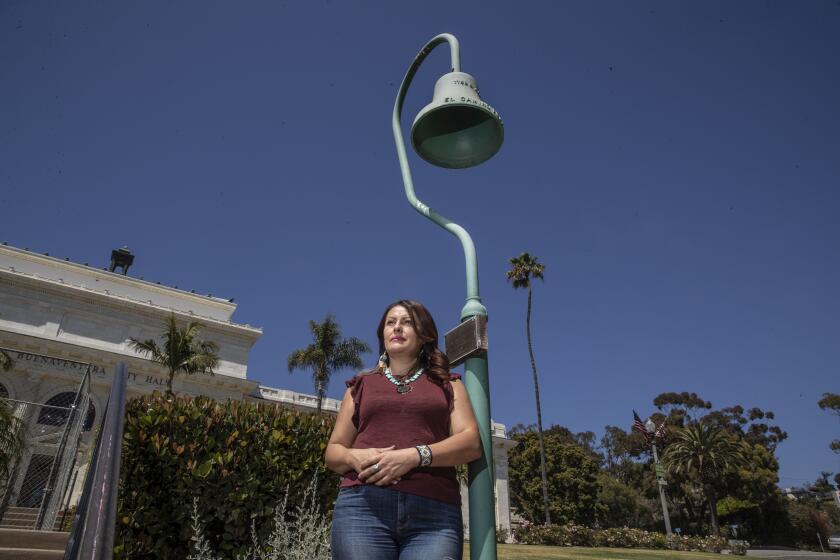‘We’re sorry’: L.A. moves to make amends for wrongs committed against Indigenous people

- Share via
Standing with members of two tribes, Mayor Eric Garcetti announced plans Monday to rename Father Serra Park in downtown Los Angeles — one of several policy initiatives intended to right historical wrongs and rectify the city’s relationship with its Indigenous people.
“The buildings that are here were built on the slave labor of native inhabitants. And we’re sorry,” Garcetti said, standing alongside members of the Gabrielino/Tongva and Fernandeño Tataviam tribes. “We’re sorry as a city for all the things that were done as a Spanish city, a Mexico city, an American city to erase the peoples whose land this is and always will be.”
The other proposals, which were put forward by Councilman Mitch O’Farrell and still need to be introduced in and approved by City Council, include an effort to update the city’s seal and flag to include Indigenous representation and the city issuing a formal apology to Native American tribes.
O’Farrell, a member of the Wyandotte Nation, also plans to introduce a resolution that calls on federal and state governments to rename the Christopher Columbus Transcontinental Highway, as part of the 10 Freeway is labeled.
The Los Angeles City Council voted Wednesday to eliminate Columbus Day from the city calendar, siding with activists who view the explorer as a symbol of genocide for native peoples in North America and elsewhere.
“Native Americans have been the least people heard,” said Anthony Morales, chief of the Gabrielino/Tongva San Gabriel Band of Mission Indians. “But now, with what’s going on in today’s times, I feel that it’s our opportunity to be heard and to be visible.” Morales’ ancestors established Yangna, the tribal village thought to have been located in what is now downtown Los Angeles.
Garcetti also announced plans to develop a cultural easement that will grant tribal members priority access to the park for traditional ceremonies, part of a broader new city policy direction regarding land taken from Indigenous communities.

“That’s a fancy way of saying, ‘We’re saying this is your land,’” Garcetti said of the cultural easement.
The Board of Recreation and Parks Commissioners will rename the park in collaboration with local tribal communities.
During the initial process, the city discovered that the small park — which is part of the broader Los Angeles Plaza Park — was never officially named for Serra, despite that name being commonly used, according to Chief Design Officer Christopher Hawthorne.
Latinos have served as the most vocal detractors and defenders of Junípero Serra over the last few months in a fierce debate about the saint’s legacy.
Because of this, the city won’t have to formally remove the name, but it will have to be changed on maps.
The legacy of Father Junípero Serra — an 18th century Roman Catholic priest and architect of California’s mission system — has become a flashpoint in recent years. Amid the broader racial reckoning last summer, statues of Serra were toppled by activists in cities around California — including one in the soon to be renamed park.
More to Read
Sign up for Essential California
The most important California stories and recommendations in your inbox every morning.
You may occasionally receive promotional content from the Los Angeles Times.












